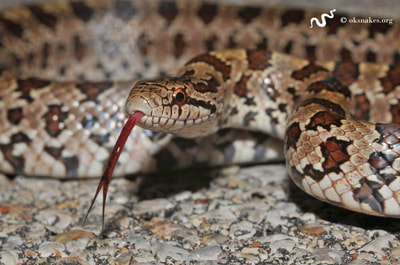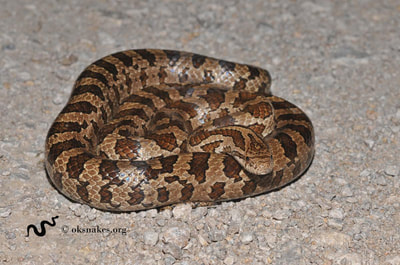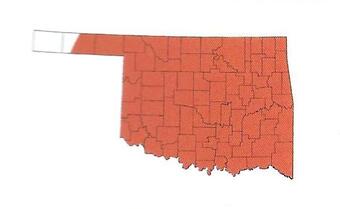Prairie kingsnake
Lampropeltis calligaster
Lampropeltis calligaster
HARMLESS
Description:
This snake has a tan or brown body with dark blotches down the center of its back. Two rows of smaller, alternating blotches run down each side of its body. The belly is yellow and has dark square blotches. Its scales are smooth and the anal plate is single.
Size:
Adults 30 - 48 inches (76 - 122 cm)
Prey:
Snakes, rodents, and lizards
Reproduction:
Mates in spring and lays 5 - 20 eggs in June to July. Eggs hatch in 2 - 3 months and hatchlings are 8 - 12 inches (20 - 30 cm) long.
Habitat:
Farmland, prairies, pastures, fields, and open woodlands
Other Information:
Spends a lot of the day under rocks, brush, or in mammal burrows. This snake occasionally eats other snakes and is unharmed by the bite of any of our native venomous snakes.
Like the ratsnakes, the prairie kingsnake is prone to vibrating or buzzing its tail when disturbed. Although sometimes similar in appearance, kingsnakes differ from ratsnakes in that their anal plate is single; a ratsnake's is divided.
Why doesn't the range map show this species in my county?
Description:
This snake has a tan or brown body with dark blotches down the center of its back. Two rows of smaller, alternating blotches run down each side of its body. The belly is yellow and has dark square blotches. Its scales are smooth and the anal plate is single.
Size:
Adults 30 - 48 inches (76 - 122 cm)
Prey:
Snakes, rodents, and lizards
Reproduction:
Mates in spring and lays 5 - 20 eggs in June to July. Eggs hatch in 2 - 3 months and hatchlings are 8 - 12 inches (20 - 30 cm) long.
Habitat:
Farmland, prairies, pastures, fields, and open woodlands
Other Information:
Spends a lot of the day under rocks, brush, or in mammal burrows. This snake occasionally eats other snakes and is unharmed by the bite of any of our native venomous snakes.
Like the ratsnakes, the prairie kingsnake is prone to vibrating or buzzing its tail when disturbed. Although sometimes similar in appearance, kingsnakes differ from ratsnakes in that their anal plate is single; a ratsnake's is divided.
Why doesn't the range map show this species in my county?


